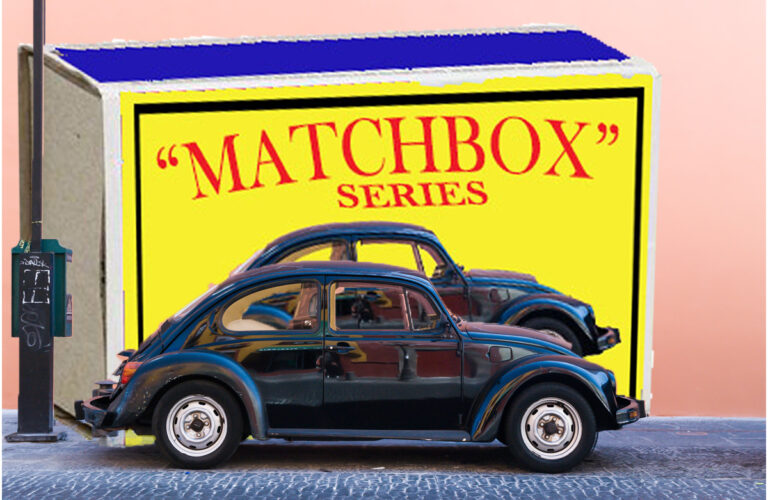You spent ages trying to come up with a good gift for the kids, and, yay, they loved it. But two weeks later…how many of those toys still work?
If you’re already repeating Grandma’s “they don’t make ’em like they used to,” then, once again, we have to ask:
What did they use to make?
What toys did Grandma and Grandpa get as children for Christmas? Birthdays? Easter?
But first, maybe the bigger question: Why does it matter?
Frontida Assisted Living Facilities, such as the Adelaide Place in Fond du Lac, WI, provide you with posts like this one to help you live your best life.
Some Days, Life Feels Boring, Why Not Take a Trip Down Memory Lane?
“A CD. How quaint. We have these in museums.”
― Eoin Colfer, The Eternity Code
Talking about the past isn’t just comparing. It’s about connecting.
What you learn about Grandma and Grandpa will help you understand them better.
- You’ll see what makes them tick. And maybe tock.
- You’ll see how different life is now. And maybe how you’re not as different as you thought.
Yet, more importantly, you might help them live in the moment more. Proper memory care is an important part of growing old, but recalling old memories can help keep the mind fresh.
Ask how they felt playing those first games, sitting in their first movie theater, ordering their first French fries, trying their first washing machine.
Recalling those emotions helps you understand what’s frustrating them now and how you can support them.
So take another walk with me and let’s see what might be blasted from Grandma’s past.
Vintage Specials
“To this day, I have the most fond memories of some of my old toys.”
–Michael Keaton
You know those gotta-have-it fly-off-the-shelf toys, like the Cabbage Patch Dolls of the 80s? Or the 90s Furbies and Beanie Babies?
In the 1930s, it was the Flossy Flirt Doll — flirty because her eyes moved back and forth or winked and blinked.
And the Shirley Temple and Judy Garland dolls, darlings of the cinema.
Of course, radio created its fan faves, too, like the Amos and Andy Taxicab. And the Orphan Annie Decoder Pin.
And you can’t forget the 1938 Red Ryder BB gun. Yes, like Ralphie in A Christmas Story. “You’ll shoot your eye out, kid.”
But many of the timeless toys that are still going strong today actually became trendy when Grandma and Grandpa were kids.
Let the Classic Games Begin
“Give children toys that are powered by their imagination, not by batteries”
–H. Jackson Brown
Toys in the 20s, 30s, and 40s were all about imagination, creativity, and play-acting.
- Yo-yos were the fidget-spinners of the 1920s. Whether made of metal or wood, they fit easily in pockets and kept hands busy all through the Great Depression and WWII
- Rocking horses gave kids a chance to be cowboys no matter how far into the city they lived.
- In 1931, everyone wanted finger paint.
- Throughout the 30s, Erector Sets sat at the top of wish list. Yes, with electricity and everything. Why was that a huge deal? Because only half of Americans had electricity in their homes — but it was making it into children’s toys.
- In 1937 metal pedal cars sold for $15, which would be like spending $270 now! Definitely too expensive for most depression-set homes. But they were still much-coveted toys in the Sears Roebuck Christmas catalog for several years.
Soon, in the 40s,
- Boys played army, and girls played house. Toy soldiers, fighter pilots, and artillery for one. Kitchen sets, brooms, irons, rolling pins for the other.
- Red Radio Flyer Wagons graced every backyard.
- And a little box of plastic called Legos became the most popular toy for Christmas.
Then with WWII consuming all the metal for weapons, wooden toys became the patriotic thing to buy,
- A carved train, boat, car, or plane
- Or a “See Em Walk” Pull-along Wooden Walking Doggie.
- And, in 1941, the much-loved Tinker Toys hit the shelves.
Finally, the 50s brought prosperity again, and, with it, some humor.
- Mr. Potato Head first showed up in cereal boxes as the prize-at-the-bottom, and then a year later as a toy you could buy. Googly eyes, ears, nose, mouth. Even a car. But the body? Kids had to use real potatoes from their mama’s kitchen. It wasn’t till the 60s that Hasbro added the plastic Mr. Potato Head body as a response to exasperated moms everywhere who kept finding rotten potatoes in their children’s bedrooms.
Planes, Trains, and Automobiles
“The three most exciting sounds in the world: anchor chains, plane motors, and train whistles.”
–George Bailey, It’s a Wonderful Life
Unfortunately, the electric train’s speed at becoming a household toy took a little more chug than choo-choo.
- They hit stores early in the 1900s, but by the 20s, they were still considered the rich kid’s toy. Most toy trains were wood-carved — or made with knotted string laced through old sewing thread spools.
- By the 30s, Grandpa as a kid probably still didn’t have one. But his adult-granddad might have. New O and HO scale trains came as kits with adult assembly required. WWII stopped electric train production altogether, so it wasn’t till the 1950s that the electric train set became the #1 toy for boys.
Matchbox Cars, on the other hand? They were an overnight hit.
- Created in 1952 by an English engineer for his daughter, the first toy in the box was a steam roller. His daughter took it to school, and all her friends wanted one.
- By 1954, the nineteenth Matchbox Toy was the first car, an MG TD roadster.
- That same year, the Matchbox Car crossed the pond and landed in the States, selling for 49 cents each.
So why did the engineer create the first toy in the first place? As the story goes, his daughter kept sneaking spiders into matchboxes and taking them to class.
Her dad figured the little vehicle was a much better thing to play with.
Since it’s been inducted into the Toy Hall of Fame, with 100 million sold each year, he was probably right.
When Adult Technology Becomes Child’s Play
“No matter how old you are, if a little kid hands you a toy phone…you answer it.”
–Dave Chappelle
Some of Grandma and Grandpa’s toys didn’t start as toys at all.
- The Viewmaster was a top kid-sell for most of the 1940s — But it was originally meant to help educate adults. Even the military wanted to use it to train their recruits on identifying artillery and aircraft.
- The Slinky? Before it was sold to walk down stairs, it was created to stop sensitive ship equipment from bouncing around at sea.
- Prior to the 50s, Play-Doh cleaned wallpaper — when wallpaper was actually made from paper. When the wall dressing converted to vinyl, Play-Doh was useless until they discovered it was moldable. They colored it, called it Rainbow Modeling Compound, and marketed it to children and kindergartens everywhere.
- Silly Putty was simply an accident. They intended it to be a substitute for rubber, but instead, it became a toy. It bounced, picked up copy from newsprint, molded, stretched, made a great grip around pencils for little hands, and all the while still remained useful. The 1968 Apollo 8 packed it to keep tools in place rather than letting them float around the cabin at zero gravity.
On the other hand, in the early 1950s, the Gilbert U-238 Atomic Energy Lab kit gave kids the opportunity to measure actual radioactivity.
Hmmm. Maybe sometimes what happens in adult technology should stay in adult technology.
Board Games—Anything but Boring
“It is a happy talent to know how to play.”
–Ralph Waldo Emerson
As much as parents may try to shelter kids from world events, sooner or later their games take on life’s issues.
The Great Depression left no money for new toys. Instead, growing kids spent their evenings playing games that their parents had: Dominoes, chess, checkers, and even homemade Chinese checkers boards.
Monopoly became a favorite in 1935, the story of bankers and landowners trying to end up on top.
Chutes and Ladders, originally Snakes and Ladders, came out in ’43.
Clue was designed out of boredom during WWII blackout air-raids.
- Finally produced for sale in the late 40s, it had one weapon that isn’t included in our current version: a hypodermic syringe.
- And the lead pipe contained real lead — the poisonous stuff we avoid in everything now. Later versions yanked the lead and replaced it with steel and then pewter.
In 1949, a retired teacher came down with polio. As she recuperated in a building full of children who also had the disease, she created a game that they could play by themselves, even if they couldn’t read: Candy Land.
Not so much based on life events, but just as much of a hit, Scrabble took over game shelves in the early 1950s.
So, What Was Grandpa’s Afternoon Choice for Fun?
The simplest toy, one which even the youngest child can operate, is called a grandparent.”
–Sam Levenson
Long before Grandpa became his grandchild’s favorite toy, he probably had a favorite toy of his own. What was it?
It’s time to ask him.
While you’re at it, why not about his bigger toys, too.
- Like when he got his first driver’s license.
- How about his first real car? How many could sit in the front seat?
- What did he do before seat belts or airbags?
- How much did it cost to fill up the tank?
- And how did he survive without car air conditioning? (Only half the cars in the 70s had it.)
Enjoy the stories.
And then come back to tell us all about them.
Check out these other fun posts to learn more about your grandparents’ past.
Elizabeth Daghfal is a writer, teacher, speaker, and community volunteer. When she isn't teaching or writing-- Who are we kidding? Her husband and five kids say she's ALWAYS teaching and writing. She has a passion to help people who are struggling and is happy to say her shoulders are drip-dry. Born and raised in the South, she now lives in Wisconsin and loves it--except for the fifteen months of winter. Read more about her at elizabethdaghfal.com.

